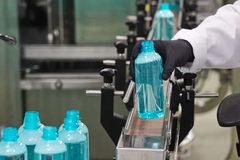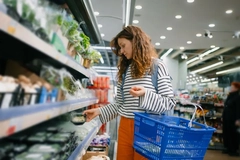California expands beverage container recycling with US$70M innovation grants
29 Aug 2024 --- The US State of California is modernizing and expanding its recycling infrastructure with the rollout of over 250 new sites across 30 counties. The facilities are funded by nearly US$70 million in Beverage Container Redemption Innovation Grants from California’s Department of Resources Recycling and Recovery (CalRecycle).
The grants, awarded to 37 projects, focus on implementing dynamic recycling methods such as reverse vending machines, mobile recycling units and bag-drop sites. This expansion is targeting underserved counties, ensuring that residents across the state have easier access to recycling services.
“Innovative ways to recycle will help more Californians cash in their beverage containers and provide recycled materials for in-state remanufacturers. These new sites will make redemption as simple as feeding containers into a machine or dropping off a bag of empty containers,” says Zoe Heller, director at CalRecycle.
Supermarket chains Save Mart and Smart & Final are among the recipients of this funding, with each chain receiving over US$2 million to install reverse vending machines in 19 counties.
Lance Klug, public information officer at CalRecycle, tells Packaging Insights: “When a recycling center does not serve an area near a supermarket, California’s Beverage Container Recycling Program requires beverage retailers in the area to redeem. These grants can help retailers meet their redemption requirements and give Californians a convenient option to cash in their empty containers where they shop for California Redemption Value (CRV) beverages.”
More on the horizon
The California government is poised to continue investing in its recycling infrastructure next year. This includes US$138 million for additional Redemption Innovation grants, US$50 million for Beverage Container Quality Infrastructure grants and US$25 million for Reusable Beverage Container Recycling Infrastructure grants.
A change coming in 2025 is the introduction of new retailer takeback rules. Starting January 1, large beverage retailers in areas not served by a recycling center will be required to either set up a system to redeem beverage container deposits in-store or join a non-profit cooperative by themselves or with other retailers to offer recycling options.
These dealer cooperatives will receive state funding support for each container recycled and will “provide a pathway for retailers to successfully fulfill their redemption obligations while providing more convenient redemption opportunities for consumers in underserved areas,” according to Klug.
 Beverage brands that initiate deposits should maintain a key role in shaping future Deposit Return System modifications and program direction.“CalRecycle is currently in the process of finalizing Senate Bill 1013 regulations to specify requirements for dealer cooperatives,” says Klug.
Beverage brands that initiate deposits should maintain a key role in shaping future Deposit Return System modifications and program direction.“CalRecycle is currently in the process of finalizing Senate Bill 1013 regulations to specify requirements for dealer cooperatives,” says Klug.
Building on the past
In addition to these infrastructure improvements, California has expanded its CRV program. This January, wine and liquor containers in boxes, cartons or pouches now carry a US$0.25 redemption value, while wine, liquor and juice containers in glass, plastic, aluminum or bimetal have a US$0.05 value if under 24 ounces and a US$0.10 value if 24 ounces or more.
If consumers choose curbside or non-profit recycling, the CRV is “donated” to those operators. This system contributes to California’s high beverage container recycling rate and low litter rate by incentivizing recycling through monetary value.
California has long considered itself a leading state in the US in beverage packaging controls. In 2011, Kamala Harris, the state’s attorney general at that time, filed a “first-of-its-kind” greenwashing lawsuit against plastic water bottle companies for misleading claims of biodegradability. This lawsuit marked the first government action to enforce California’s environmental marketing law.
This year, the state has released draft regulations for the Plastic Pollution Prevention and Packaging Producer Responsibility Act (Senate Bill 54). Signed by Governor Gavin Newsom, the bill requires producers to reduce single-use plastic waste and ensure that more packaging can be recyclable or compostable.
By Sichong Wang












